Last updated on 2025-11-03
A review and sample photos of the Leica Summilux 35mm F1.4 in titanium color, used with film, digital rangefinder cameras, and mirrorless cameras.
- Please see the disclaimer regarding advertising here.
- Italicized links in the text are advertisement links that take you to other sites.
Table of contents
Gallery
The following cameras were used to take the sample photos.
- HEXAR-RF +KODAK ELITE CHROME 100 +NIKON COOLSCAN-V
- LEICA M6 TTL +KODAK ELITE CHROME 100 +NIKON COOLSCAN-V
- LEICA M10
- LEICA M-P typ240
- LEICA M8.2
Review
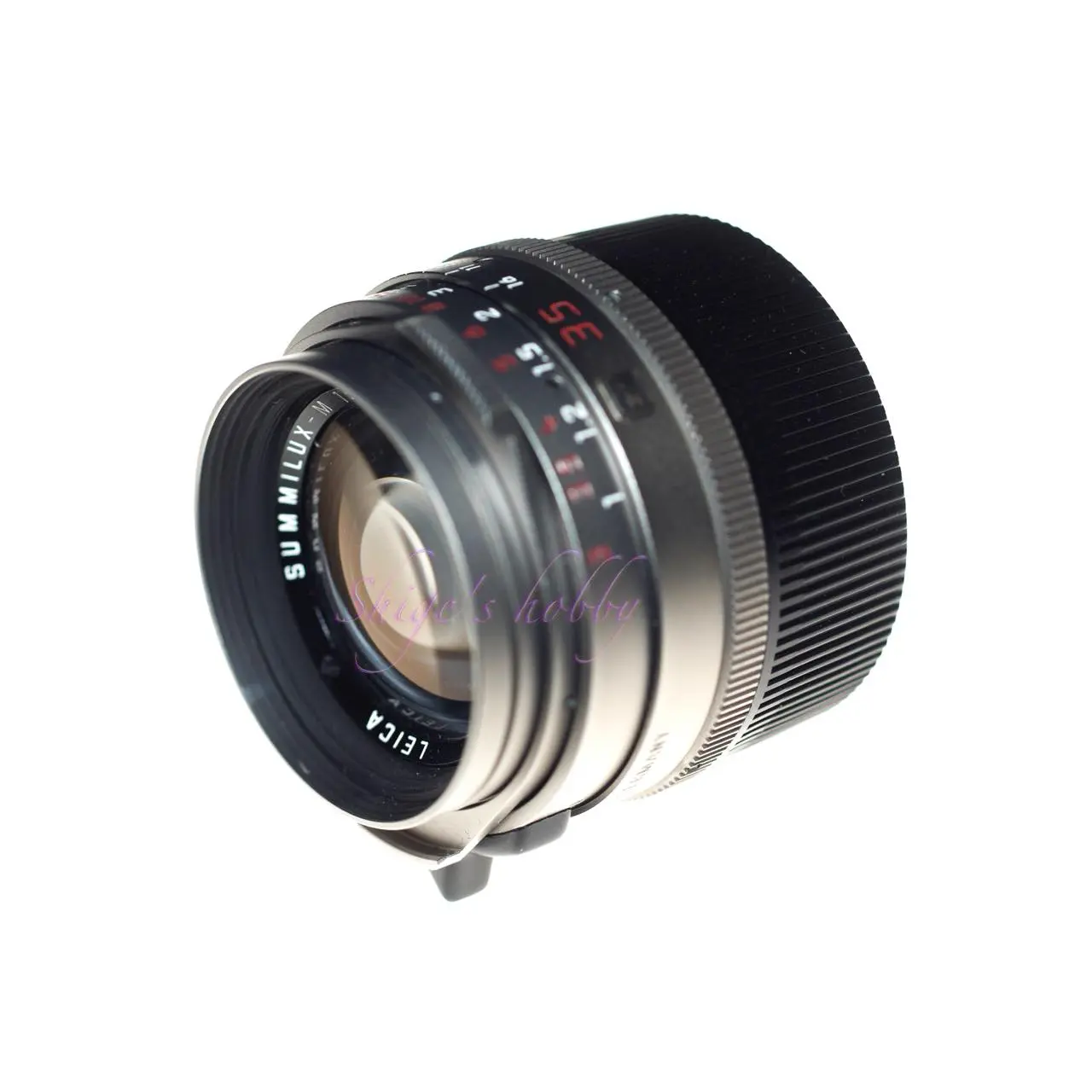
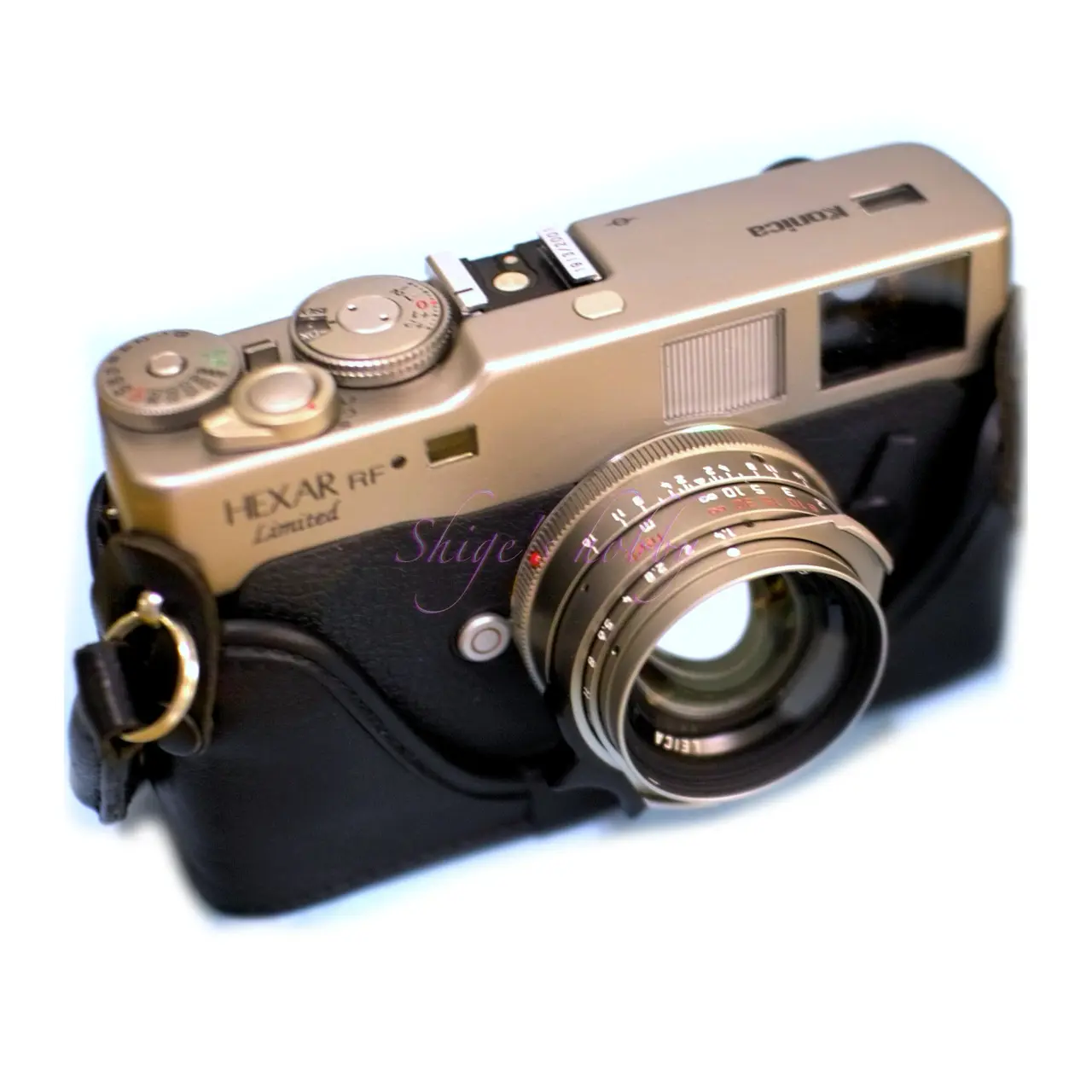
1.Overview
The second generation Summilux-M 35mm F1.4 is a lens that was manufactured in approximately 28,000 units from 1967.
The titanium color was manufactured for three years from 1990 to 1992, and the total number of units manufactured during that time, including the black color, was 4,500. Since a certain percentage of those were titanium, it would be reasonable to assume that the number manufactured was about half that, or about 2,000 units.
This lens is available in titanium as an alternative color to black, but not silver. The first generation Summilux is available in black and chrome finishes.
The lens is made of 5 groups and 7 elements, and the hood is compatible with the 12504. It can also be fitted with the IROOA hood used with the Summicron 35mm.
The filter is not threaded on the front of the lens, and the Series 7 filter is inserted into the 12504 hood mentioned above.
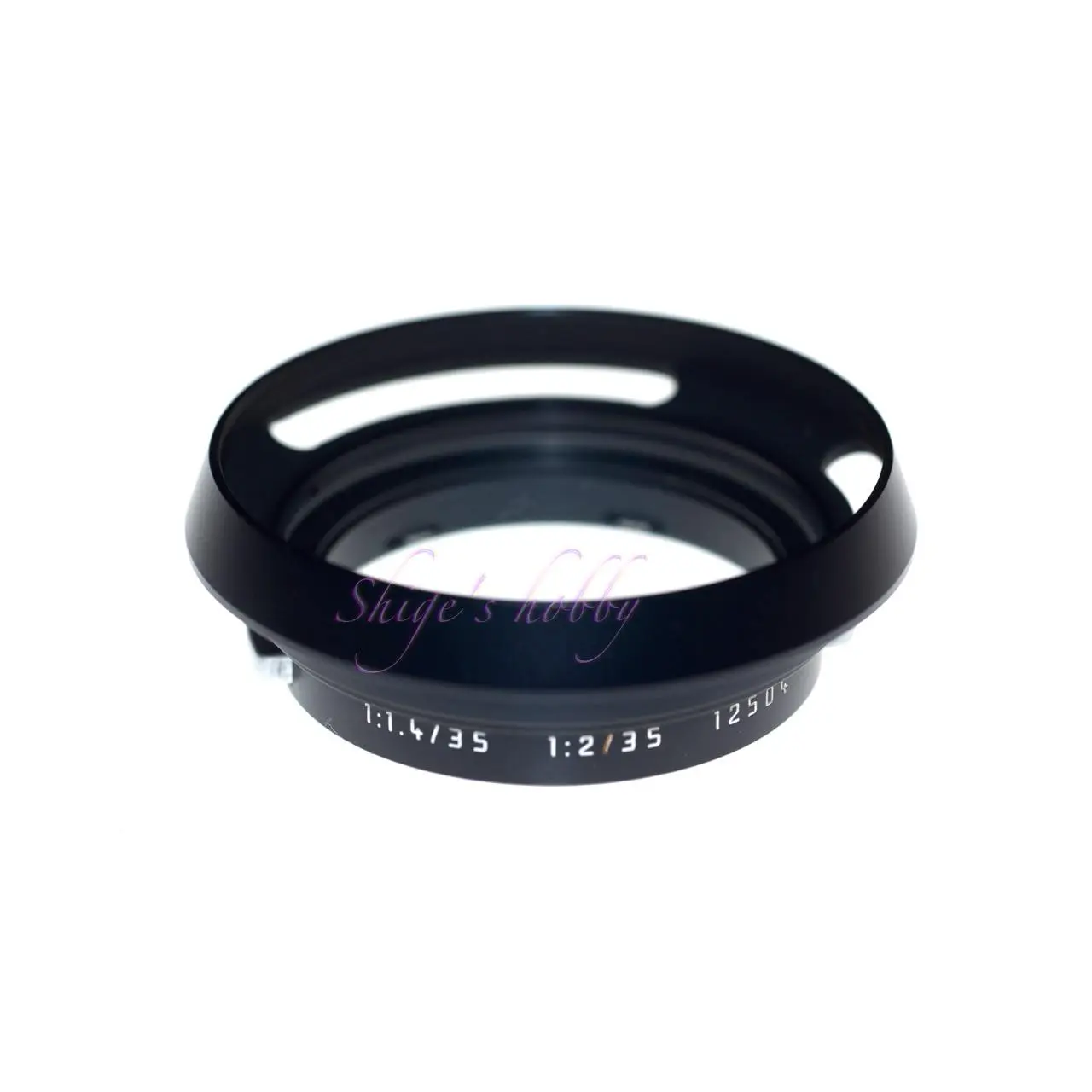
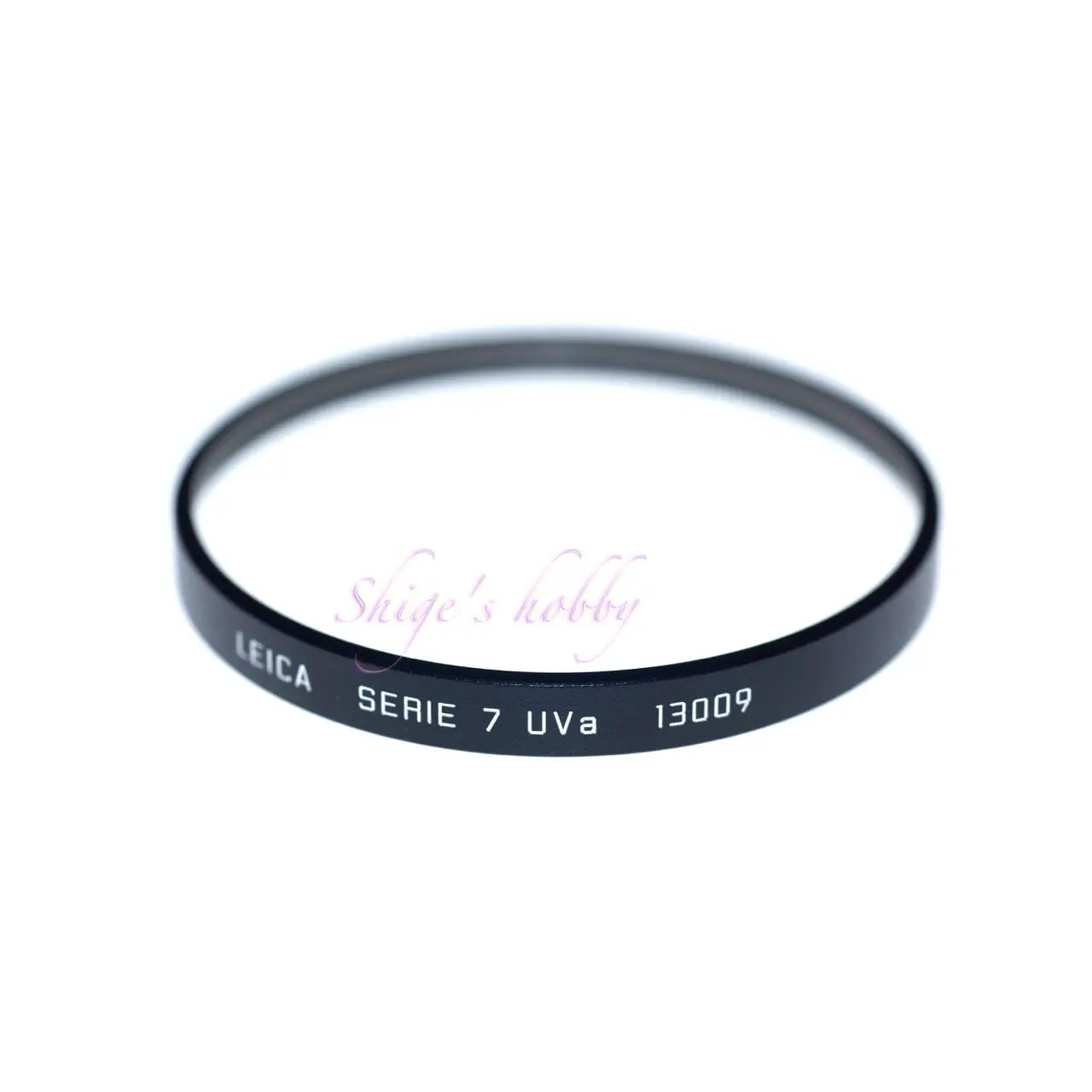
2.Usability
The second-generation Summilux M 35mm F1.4 lens, especially a newer, well-maintained one, produces excellent image quality. Even at the widest aperture of F1.4, the center of the image is sharp and well-defined, and while there is some vignetting at the edges, the image doesn’t become unusable. Focusing is easy with digital M-type Leicas, Hexar RFs, and Leica M6s using the rangefinder focusing system.
The minimum focusing distance is 1 meter, so it’s not a lens for close-up photography, but I think that’s part of its charm. While you could use an auxiliary helicoid with a mirrorless camera to get closer, it’s not really a lens meant for that kind of use.
I once owned an older Summilux M 35mm with a stopper that wasn’t in very good condition.
The images from that lens showed significant distortion at the edges. It might have been a desirable item for those who appreciate such characteristics.
I suspect that the general impression of the Summilux 35mm as a lens with quirky or wild image characteristics stems from reviews of lenses like that one.
■Film rangefinder camera
When using a film camera with reversal film, you can obtain photographs that more faithfully reflect the characteristics of the film than the idiosyncrasies of the lens. The distortion in the periphery at wide open aperture is likely a characteristic of the lens.
The LEICA M6 TTL I used had a 0.85x viewfinder, so focusing with the rangefinder’s split image was reasonably possible, but even so, with a film camera, I often felt the need to stop down the aperture by about one stop to ensure a good result.
Cameras with a 0.85x viewfinder have a widest angle of view corresponding to a 35mm focal length and support 35mm to 135mm lenses.
The most common 0.72x viewfinder supports 28mm to 135mm lenses, and the low-magnification 0.58x viewfinder supports 28mm to 90mm lenses.
The HEXAR-RF’s 0.68x viewfinder, which emphasizes the wide-angle side, makes it difficult to focus using the rangefinder’s split image when using this lens at wide open aperture. During the day, I always used it stopped down to around F2 or F4. While there are some examples of shots taken at wide open aperture, I was rarely satisfied with the focus.
■Digital rangefinder camera
The Leica M10 and M-P typ240 are digital rangefinder cameras equipped with a 35mm full-frame, 24-megapixel sensor, allowing for shooting with the same feel as film cameras.
Digital cameras with around 20 megapixels offer higher resolution than film, so the difference in image quality between the center and edges of the frame can be noticeable when shooting at wide apertures. This lens is therefore best suited for applications where the main subject in the center of the frame is emphasized.
The Leica M8 uses an APS-H size, 10-megapixel image sensor. Because the sensor size is smaller than 35mm film, the effective focal length is 47mm (calculated by multiplying the actual focal length of 35mm by a conversion factor of 1.33 based on the sensor size), and the resulting image is cropped at the edges. When using this lens, the viewfinder displays a 47mm equivalent, so no special awareness is needed to understand the shooting range. If using an external viewfinder, a 50mm external viewfinder, which is close to 47mm equivalent, would be used.
Because the lens’s most noticeable characteristics are in the edges of the frame, which are cropped, the resulting images appear less affected by these characteristics compared to images taken with a 35mm full-frame sensor camera.
Furthermore, this lens interferes with the internal mount of the Leica M8 without modification, so it is necessary to request a modification from Leica to make it compatible with the M8. When I requested this modification, it was completed in about a month. It seems like a design flaw in the Leica M8, and it would have been nice if they had offered a free modification, but since the cost was only about 10,000 yen, I requested the paid service.
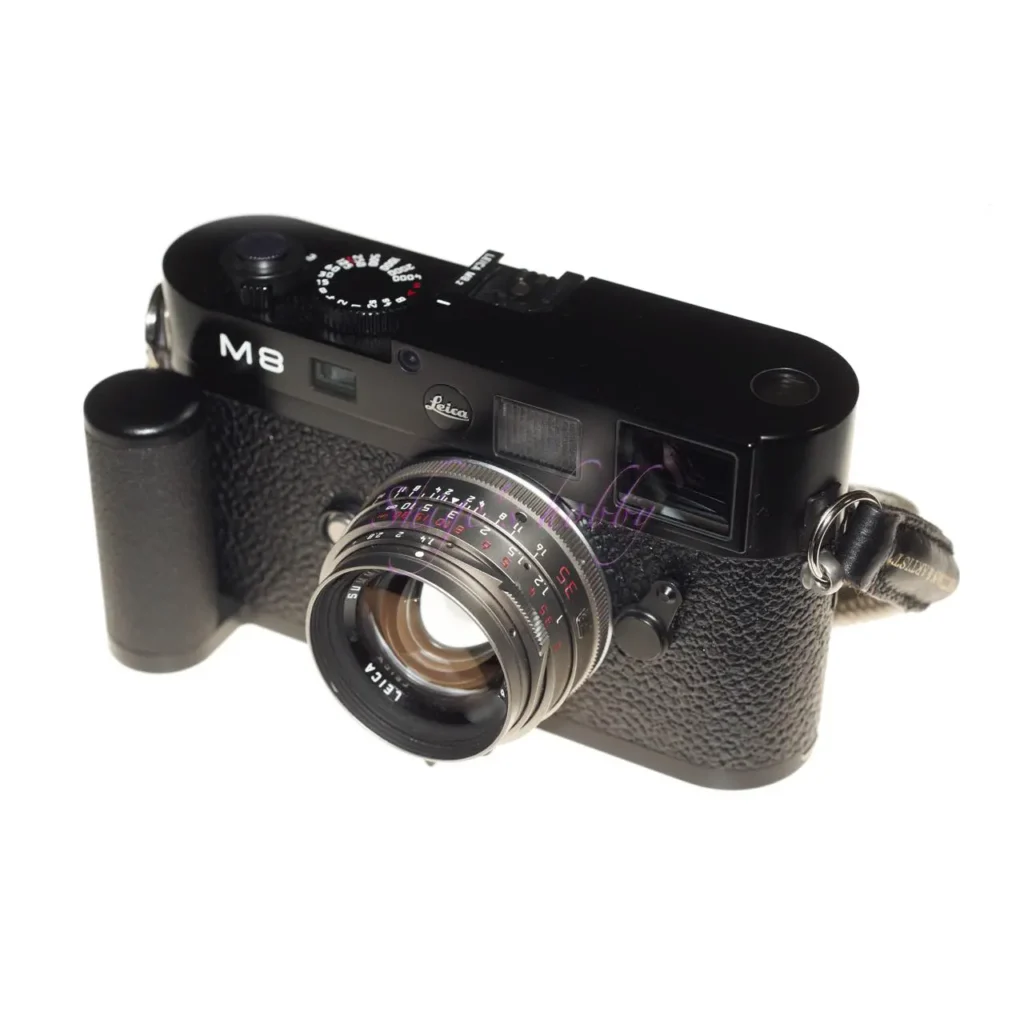
■ Mirrorless camera
The Leica SL typ601 is a mirrorless camera equipped with a full-frame 24-megapixel sensor. Mirrorless cameras allow for precise focusing by using an electronic viewfinder.
To achieve more accurate focusing, it’s necessary to compose the shot, move the magnified focus frame to the desired focus point, and then adjust the focus. It’s also crucial to strictly adhere to the practice of not changing the composition after adjusting the focus.
When used with the HASSELBLAD X2D-100C, which has a medium format digital sensor (44mm x 33mm), there’s a high possibility of accuracy issues with the mount adapter. At the widest aperture, it seems to be slightly over-focused at infinity, with infinity focus being achieved when focusing closer than 10 meters. When stopped down to around F4, infinity focus is achieved even at the infinity position.
Furthermore, the resulting images, as shown below, have completely vignetted edges, and the result doesn’t change even when the lens hood is removed or the aperture is adjusted.
This indicates that the lens’s image circle is optimized for 35mm film and is not suitable for medium format digital sensors.
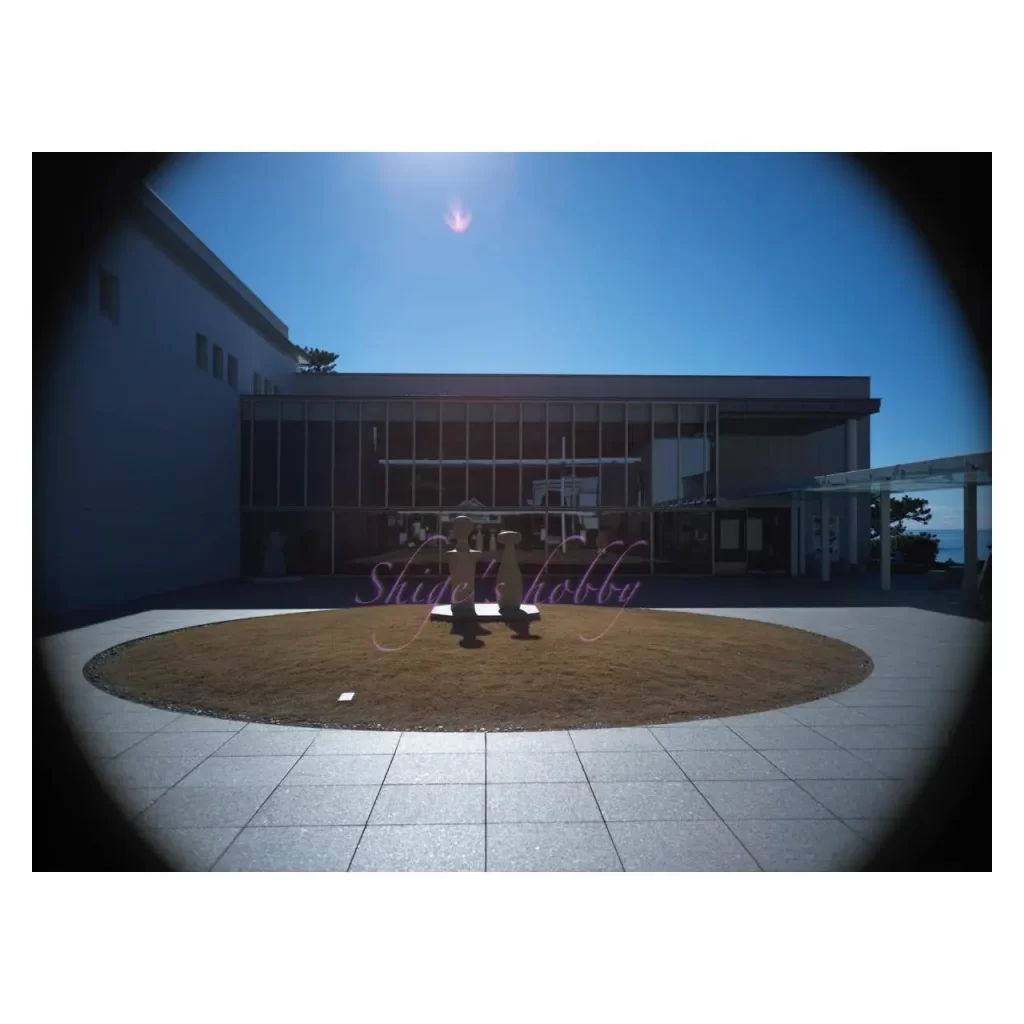
The lens I have was purchased second-hand in 2008 and was manufactured in 1992 with a serial number of 3.6 million. The lens barrel has the nostalgic “sh” mark (a mark indicating an officially imported product from SiberHegner).
SiberHegner had been an official distributor of Leica products since 1974, but ceased to be a distributor when Leica Japan was established in 2005. Even now, you can see lenses with the “sh” mark on the second-hand market. However, whether they are officially imported or parallel imported, the quality of Leica is the same, so there is no need to pay particular attention to this mark.
3.Summary
In conclusion, to summarize the second generation Summilux M 35mm F1.4, focusing with a rangefinder camera is challenging at the widest aperture, but the resolution at the point of focus is high, and aberrations in the periphery are not particularly significant.
There are no problems when shooting in direct light, but when shooting against the light at the widest aperture, it tends to produce flare, and ghosting may occur.
It’s a very compact lens, and its size is just right when combined with a rangefinder camera, which enhances the desire to take pictures.
Specifications, considerations, etc.
The Summilux M 35mm was manufactured over a long period of 28 years, so there are many variations, such as those with glasses for the M3, those with focus lever stoppers, and different colors.
The glasses-attached lens is a lens for the Leica M3, and like the glasses-attached Summicron 35mm F2, it expands the 50mm viewfinder frame to 35mm with glasses. One of the advantages is that the minimum shooting distance is shortened to 0.65m.
In November 2022, Leica itself released a lens that reproduces the appearance of the original as the Classic Series Summilux 35mm. The Classic Series includes the Noctilux 50mm F1.2 and Summaron 28mm F5.6, and the third lens in the lineup is the spherical Summilux 35mm.
Like other Classic Series lenses, this is sold as a set with a hood and other items, and comes with a dedicated hood modeled after the OLLUX and 12504.
As of 2024, there seems to be a fair amount of stock of this product on the market, and it is often seen second-hand. The list price is 660,000 yen (including 10% consumption tax), so how the price will change in the future will depend on the number produced, but looking at the current situation, it seems that the price will gradually decrease for about 10 years, or it will remain flat at a little below the list price, so I don’t think it’s a product that will increase in price quickly, which is what scalpers love.
This Classic series will probably have no effect on the demographic that buys it, but it may be Leica’s response to the fact that Chinese manufacturers and others are easily and cheaply releasing lenses that imitate the structure of Leica’s old lenses for light users.
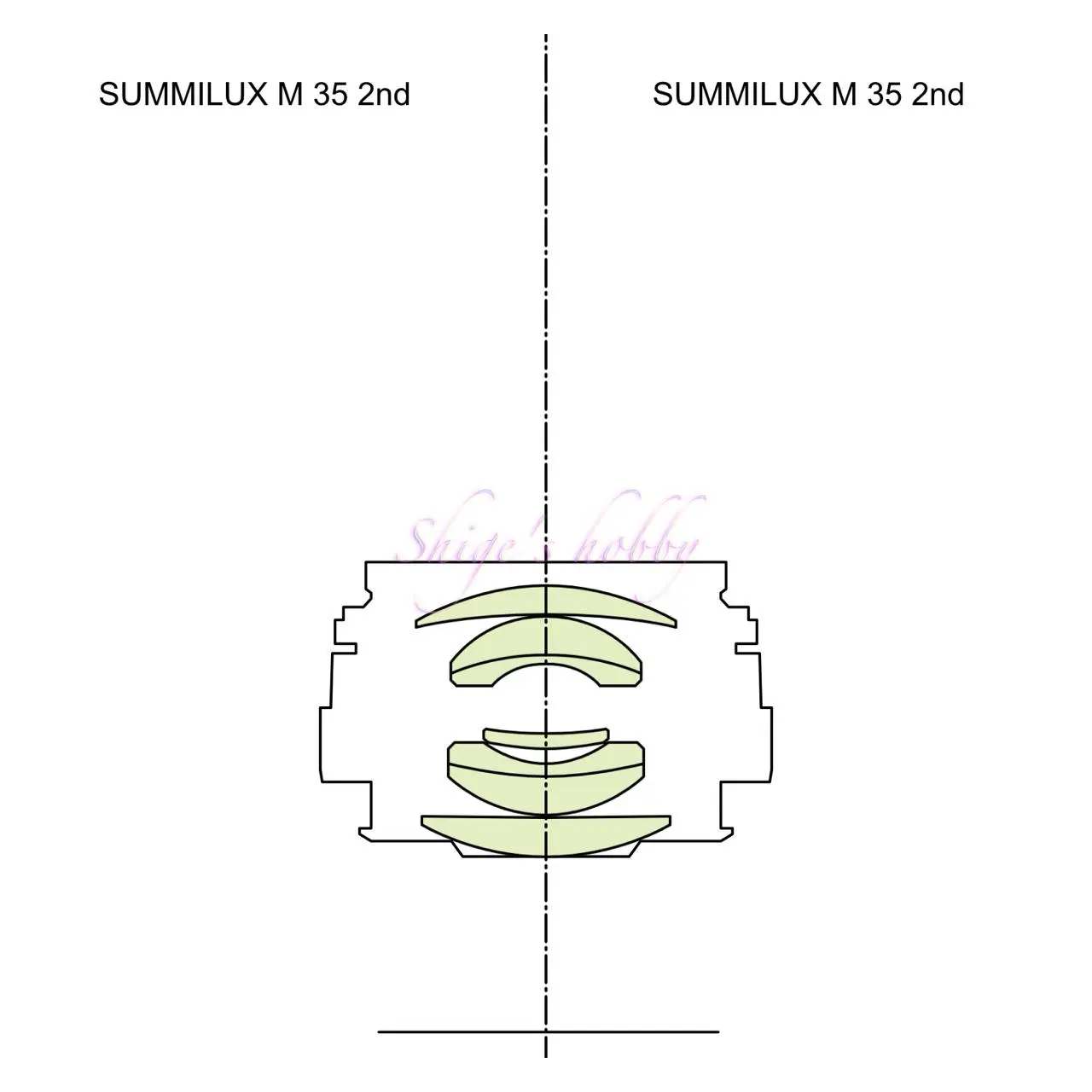
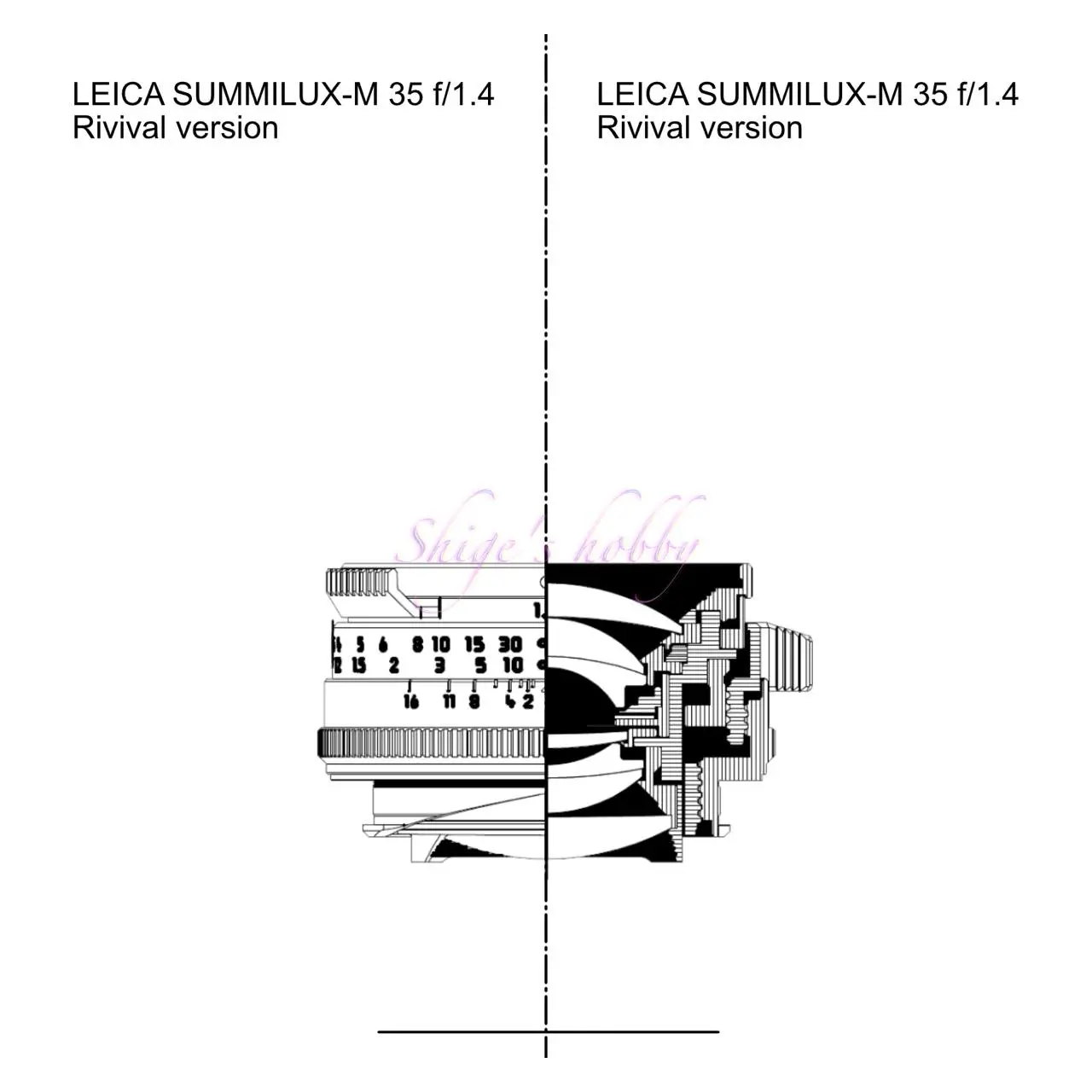
The image above is based on an official Leica diagram, and the size has been adjusted by us for comparison purposes, so the comparison diagram is not strictly accurate.
| 項目 | ストッパー付き | 眼鏡付き ストッパー付き | 2代目 | 眼鏡付き | 復刻 11301 復刻スチールリム |
| 焦点距離(mm) | 35 | 35 | 35 | 35 | 35 |
| 最大絞り | 1.4 | 1.4 | 1.4 | 1.4 | 1.4 |
| 最小絞り | 16 | 16 | 16 | 16 | 16 |
| レンズ構成 | 5群7枚 | 5群7枚 | 5群7枚 | 5群7枚 | 5群7枚 |
| 絞り羽根 | 10 | 10 | 10 | 10 | 10 |
| 最短撮影距離(m) | 1.0 | 0.65 | 1.0 | 0.65 | 1.0 |
| レンズ長(mm) | 29? | 29? | 28(チタン色実測) | ? | 26 |
| レンズ最大径(mm) | 53 | 53 | 52(チタン色実測) | ? | 66.5 (ストッパー含む) |
| フィルター径(mm) | E41 – A46.5 | E41 – A46.5 | Series 6 | Series 6 | 46 |
| レンズフード | OLLUX | ← | 12504 | 12504 | 専用フード |
| 重量(g) | 245 | 195 | 222(チタン色実測) | ? | 200 |
| リリース年 | 1960-1966 | 1960-1966 | 1967- | 1967- | 2022 |
| Item | Value | note |
| focal length(mm) | 35 | |
| Maximum aperture | 1.4 | |
| Minimum aperture | 16 | |
| Lens configuration | 5groups 7elements | |
| Leaf blade | 10 | |
| Minimum distance(m) | 1.0 | Camera distance meter interlocked in all areas |
| Lens length(mm) | 28.8 | Distance from mount flange |
| Lens max diameter(mm) | 51.5 | Focus lever excluded |
| Filter diameter(mm) | – | Series 6 filter mounted inside the hood |
| Weight(g) | 245 | |
| Release date | 1967 | |
| List price(Yen) | – |
Reference links
Affiliate links

Amazon Prime Sale
Update history
- 2025.11.2
- 2024.03.02:Update article
- 2022.09.02:First draft

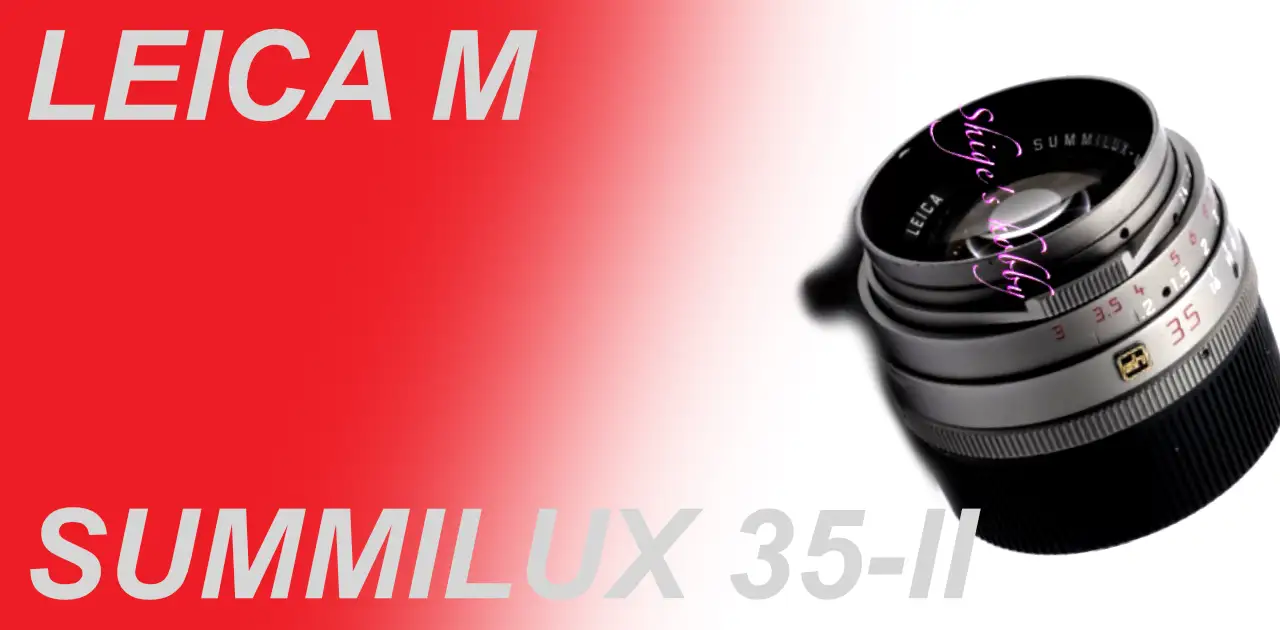

Be First to Comment